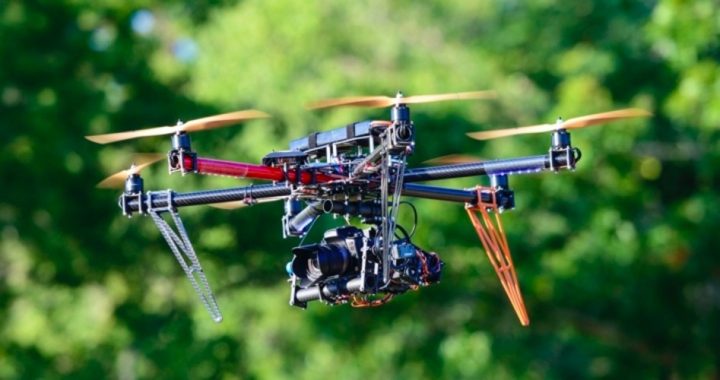
According to a story published February 5 in Wired magazine, “officials from the US military, the Department of Homeland Security, and the FAA gathered for a DHS ‘summit’ on a danger that had been consuming them privately for years: the potential use of hobbyist drones as weapons of terror or assassination.”
It’s no wonder the Obama administration fears the potential power of drones, given its use of drones to carry out assassinations.
Although the press was strictly prohibited from attending the hobby drone conference, a source provided Wired with the following glimpse into the meeting:
The officials played videos of low-cost drones firing semi-automatic weapons, revealed that Syrian rebels are importing consumer-grade drones to launch attacks, and flashed photos from an exercise that pitted $5,000 worth of drones against a convoy of armored vehicles. (The drones won.) But the most striking visual aid was on an exhibit table outside the auditorium, where a buffet of low-cost drones had been converted into simulated flying bombs. One quadcopter, strapped to 3 pounds of inert explosive, was a DJI Phantom 2, a newer version of the very drone that would land at the White House the next week.
After one of its devices was flown onto the White House lawn, DJI pushed a “mandatory firmware update” to owners of the Phantom 2 that would kill the device should anyone try to fly one of them within 15.5 miles of the White House.
Although there is no other known use of this geofencing technology by other drone manufacturers, given the habit of the federal government of installing tracking and surveillance chips in consumer electronics, it seems all but certain that hobby drones will soon be preemptively prevented from flying anywhere near other protected property.
Included in the Wired article is a notable fact about other known geofenced locations. The magazine reports that there are only two places on earth (other than airports) that are shut up within these virtual walls: the White House and Beijing’s Tiananmen Square.
One thing the federal government surely understands is the ability of individuals to hack computer systems. Agents of the Obama administration have conducted various cyber attacks of their own and thus cannot be ignorant of the capability.
Regarding the so-called hobby drones, owners will eventually figure out a way to dig up the electronic fences, so to speak, and cut the technological tether placed on their devices. As Wired reports:
Hardcore drone hobbyists tend to be tinkerers, and sooner or later their rumbling will translate into published firmware hacks and workarounds anyone can use.
“Right now there [don’t] exist any hacks to remove the geofencing or downgrade the firmware,” says Herbert. “I’m sure they’re coming. People will figure it out eventually.”
DJI insists that it is staying one step ahead of the hackers.
“We do provide different layers of security to make it difficult to hack and get around,” says DJI’s Perry, as quoted by Wired.
Extra layers of security or not, anyone determined to doctor his drone will make it happen eventually. This fact will not deter the government from attempting to outlaw such tampering, however.
As it has demonstrated with gun control regulations, though, the government isn’t so interested in preventing drone-delivered death as it is in making sure it maintains its monopoly on such power.
Joe A. Wolverton, II, J.D. is a correspondent for The New American. Follow him on Twitter @TNAJoeWolverton.



